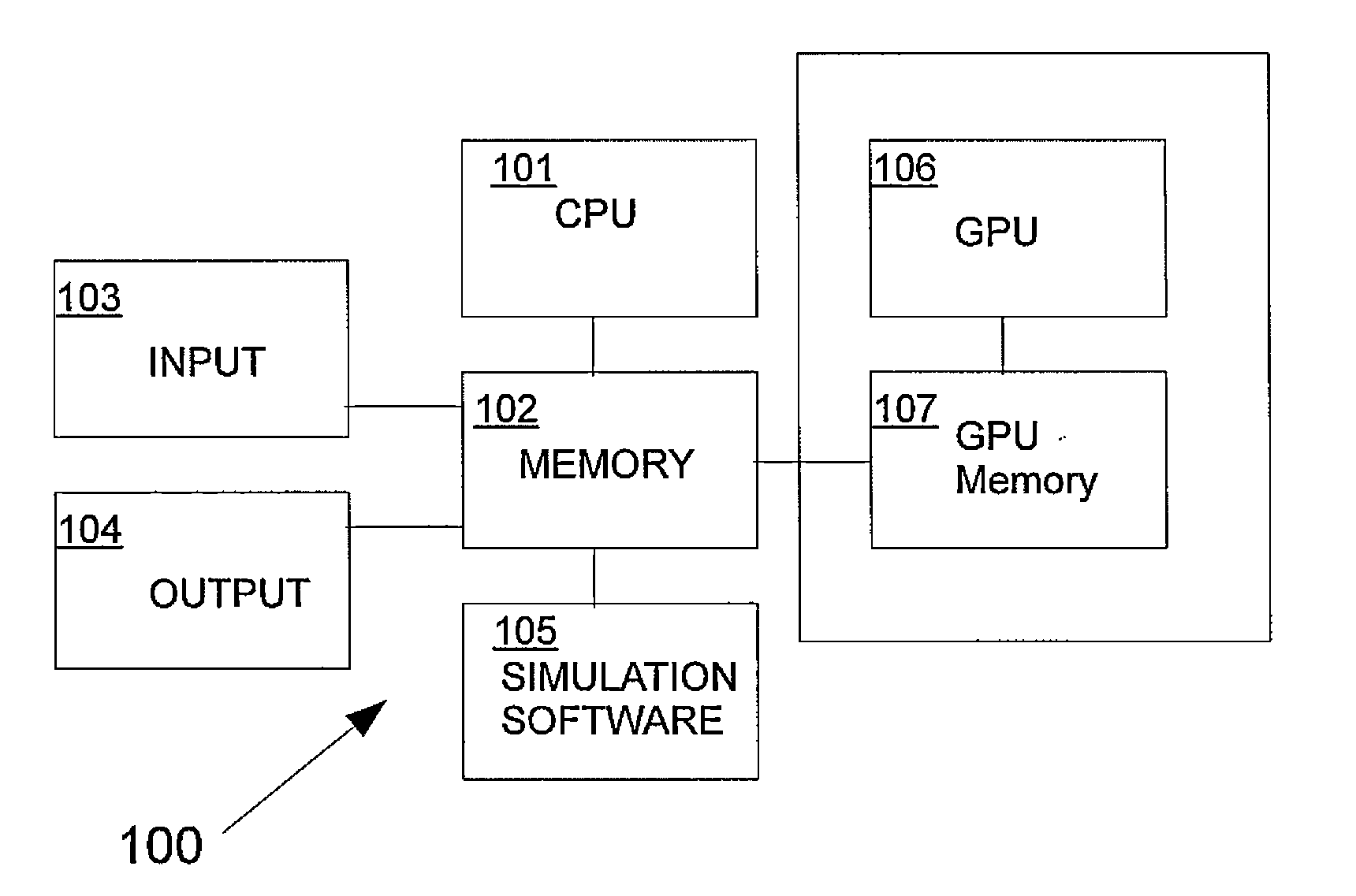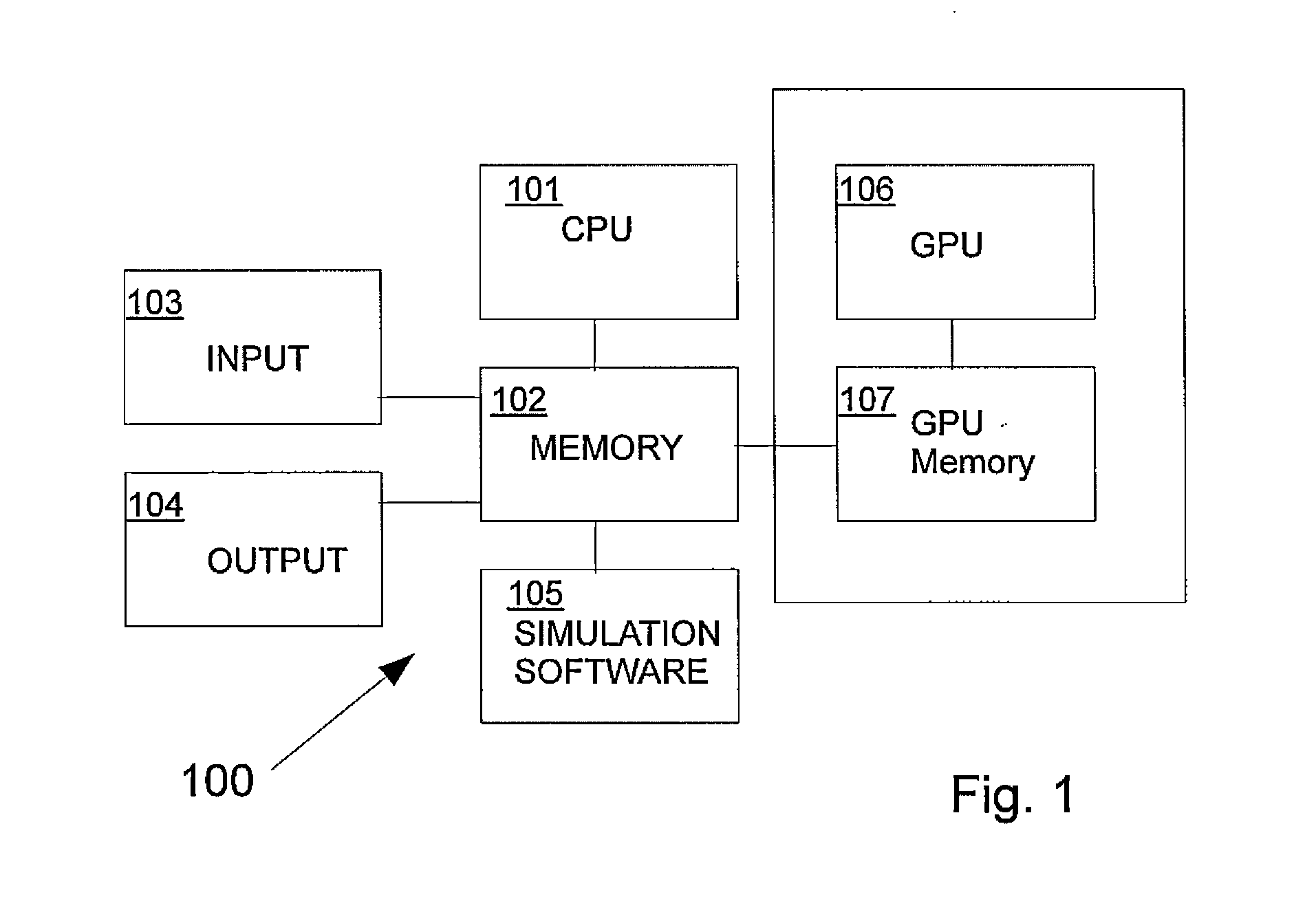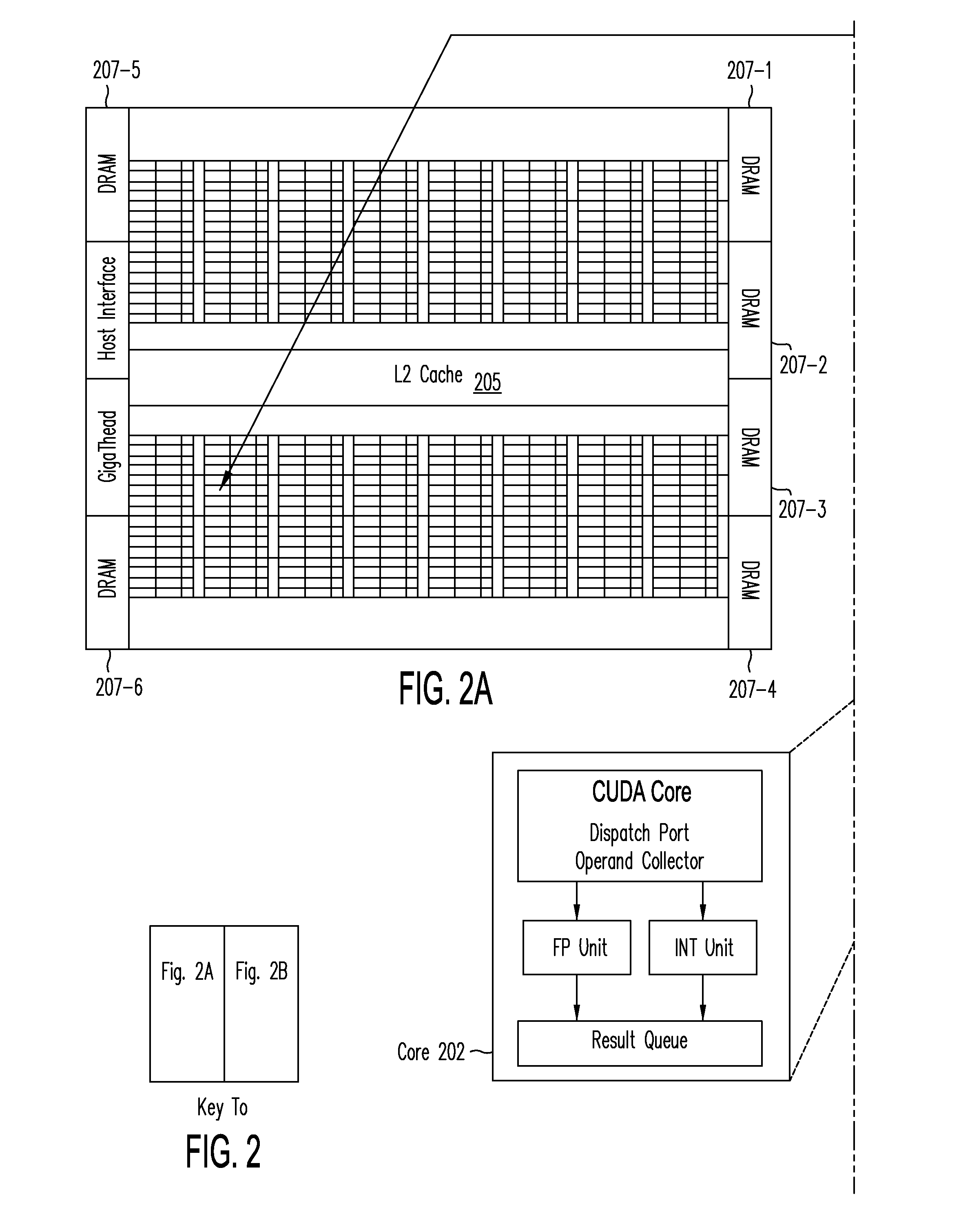Concurrent simulation system using graphic processing units (GPU) and method thereof
a simulation system and graphic processing unit technology, applied in the field of concurrent simulation system, can solve the problems of slow circuit simulation, no significant advancement in analog circuit design techniques or circuit simulation techniques over the past 30 years, and time-consuming process of circuit simulation, so as to achieve the effect of high overall speed, low memory bandwidth, and efficient access to memory
- Summary
- Abstract
- Description
- Claims
- Application Information
AI Technical Summary
Benefits of technology
Problems solved by technology
Method used
Image
Examples
Embodiment Construction
[0038]Reference is now made in detail to the preferred embodiments of the present invention. While the present invention is described in conjunction with the preferred embodiments, such preferred embodiments are not intended to be limiting the present invention. On the contrary, the present invention is intended to cover alternatives, modifications and equivalents within the scope of the present invention, as defined in the accompanying claims.
[0039]In the following detailed description, merely for exemplary purposes, the present invention is described based on an implementation using the Nvidia CUDA programming environment, which is executed on Nvidia Fermi GPU hardware.
[0040]According to one embodiment of the present invention, a concurrent simulation of a custom designed circuit is carried out by the following algorithm:[0041](a) providing as input to the concurrent simulation system circuit netlist, device models, operating condition, and circuit input and output signals;[0042](...
PUM
 Login to View More
Login to View More Abstract
Description
Claims
Application Information
 Login to View More
Login to View More - R&D
- Intellectual Property
- Life Sciences
- Materials
- Tech Scout
- Unparalleled Data Quality
- Higher Quality Content
- 60% Fewer Hallucinations
Browse by: Latest US Patents, China's latest patents, Technical Efficacy Thesaurus, Application Domain, Technology Topic, Popular Technical Reports.
© 2025 PatSnap. All rights reserved.Legal|Privacy policy|Modern Slavery Act Transparency Statement|Sitemap|About US| Contact US: help@patsnap.com



